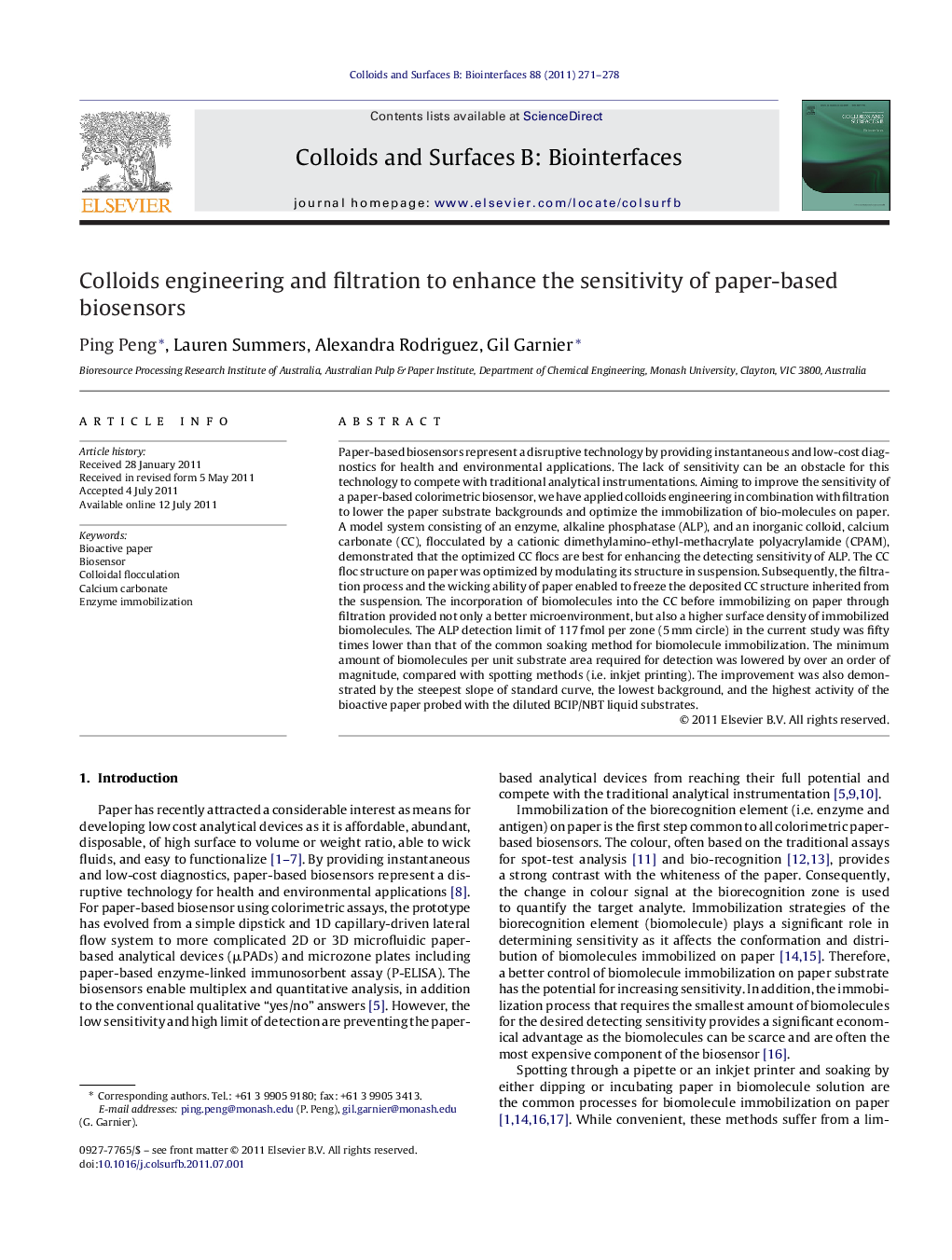| Article ID | Journal | Published Year | Pages | File Type |
|---|---|---|---|---|
| 601053 | Colloids and Surfaces B: Biointerfaces | 2011 | 8 Pages |
Paper-based biosensors represent a disruptive technology by providing instantaneous and low-cost diagnostics for health and environmental applications. The lack of sensitivity can be an obstacle for this technology to compete with traditional analytical instrumentations. Aiming to improve the sensitivity of a paper-based colorimetric biosensor, we have applied colloids engineering in combination with filtration to lower the paper substrate backgrounds and optimize the immobilization of bio-molecules on paper. A model system consisting of an enzyme, alkaline phosphatase (ALP), and an inorganic colloid, calcium carbonate (CC), flocculated by a cationic dimethylamino-ethyl-methacrylate polyacrylamide (CPAM), demonstrated that the optimized CC flocs are best for enhancing the detecting sensitivity of ALP. The CC floc structure on paper was optimized by modulating its structure in suspension. Subsequently, the filtration process and the wicking ability of paper enabled to freeze the deposited CC structure inherited from the suspension. The incorporation of biomolecules into the CC before immobilizing on paper through filtration provided not only a better microenvironment, but also a higher surface density of immobilized biomolecules. The ALP detection limit of 117 fmol per zone (5 mm circle) in the current study was fifty times lower than that of the common soaking method for biomolecule immobilization. The minimum amount of biomolecules per unit substrate area required for detection was lowered by over an order of magnitude, compared with spotting methods (i.e. inkjet printing). The improvement was also demonstrated by the steepest slope of standard curve, the lowest background, and the highest activity of the bioactive paper probed with the diluted BCIP/NBT liquid substrates.
Graphical abstractFigure optionsDownload full-size imageDownload as PowerPoint slideHighlights► Colloids engineering combined with filtration improved paper-based biosensor sensitivity. ► Incorporation of calcium carbonate doubled alkaline phosphatase immobilization efficiency on paper. ► Optimized flocs of calcium carbonate-enzyme presented the largest immobilized enzyme activity and detection sensitivity as well as the lowest background and detection limit. ► Filtration can retain, on paper, the floc conformation inherited from the suspension.
